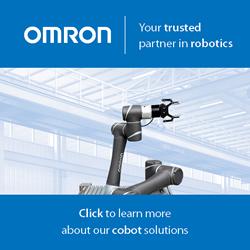Ideally, hospitals and clinics would be able to justify the cost of a new robot based on scientific studies on its effectiveness and business cases on its usability. But for new platforms, these are very scarce.
Dr. Roger Smith | Florida Hospital Nicholson Center
What kind of financial obstacles do medical facilities encounter most when deciding to purchase a surgical robot? How do they justify the cost?
Surgical robots are among the most expensive pieces of equipment purchased by a hospital, typically in the $1-2 million each range. Capital purchases of this magnitude can consume a big portion of the annual capital plan for small and medium-sized facilities. These capital plans are usually on an annual cycle, so the process to acquire one can run for a year or a little longer.
The da Vinci robot is very established, so hospitals can get a very good idea of the capabilities they are purchasing and the plan for developing patient volumes to use it. But many other platforms are just now emerging, so the details around space requirements, installation, operational procedures, instrument acquisition and lifecycle, maintenance, and the ability to integrate it with the OR staff is much less clear.
Ideally, hospitals and clinics would be able to justify the cost of a new robot based on scientific studies on its effectiveness and business cases on its usability. But for new platforms, these are very scarce. The FDA 510(K) process has demonstrated that the device is capable of at least equivalent effectiveness to the existing methods of treatment, but that falls short of justification for such a major investment. The hospital must evaluate its current capabilities and needs. Can this robot supplement the skills of the current surgical staff to improve their clinical outcomes? Will the system improve process efficiency to increase the throughput of the surgical team? Is the machine in demand by the patients who would be treated? These kinds of questions are part of the decision-making process.
What challenges do hospitals encounter most when it comes to training its staff to operate these systems?
Operating rooms are a team-oriented environment, and new technology means a new experience for everyone – not just the surgeon. The device manufacturers typically provide the initial training programs for the robot. They focus on the surgeon’s proficiency with the device but must also instruct the rest of the OR staff on how to move, drape, manipulate, dock, undock, load instruments, respond to faults, and communicate with each other about the device. As expertise develops within the clinical ranks with the device, this training can transition to in-house training programs and events offered by third parties. However, since a robot is such a capital-intensive device, a partnership with the manufacturer continues to be necessary to provide access to training equipment without having in incur multi-million-dollar training expenses.
When a hospital finds itself using multiple robots, they have to decide how to apply the training to the entire OR staff. Will all staff learn to use all robots? Or will some specialize in robot A and others in robot B? The first challenges staff to master and remain current with many different devices. The latter creates a specialization that limits flexibility in scheduling the staff for cases.
What mistakes do hospitals make most often when acquiring a system?
The most common mistake has been for a hospital to acquire an expensive device, but without the patient volume to use it regularly. This means the surgeon and staff are not able to use it daily or weekly to develop really exceptional talent with it. The lack of patient volume also means that the hospital is not recouping the investment in the device, nor will they have leverage in negotiating prices for instruments and service contracts.
Are most hospitals constructed to have space for these systems?
Real estate in an operating room is premium space. The number of new surgical devices and support equipment that can improve surgical outcomes has grown faster than the rooms themselves have expanded in size. Many existing OR’s simply do not have room to add a robotic platform, so hospitals may need to renovate their OR or build new in order to accommodate these devices.
Once one robot occupies an OR, it is difficult to rotate different robots into that room. So an OR can become dedicated to a specific robotic platform.
In short, what are the main advantages and main challenges with implementing robotic surgical systems?
We have been able to identify six motivations for implementing robotic surgical systems
Fidelity – Some robots are used to aid the surgeon’s precision and stability during surgery.
Safety – In some manual surgeries, there is a high level of exposure to radiation that is potentially dangerous to the doctors and nurses assisting the procedure. Robotics allows the surgeon and OR team to perform their functions from outside of the radiation field.
Accuracy – With the aid of robotics, the actions performed by the human surgeon are guided such that they follow the plan precisely, removing any unplanned variations that would help reduce the outcome of the procedure for the patient.
Less Invasive – Robotics can address cancer tumors without requiring surgical incisions. It uses a computer and robotically controlled focused energy to kill cells inside the body without ever cutting through the surface of the skill.
Nationality – Robotics are progressing in different countries around the world. This is meant to make the devices more accessible to the citizens of the host country and to reduce the negative impacts of expensive imports.
Efficiency – Once a robotic surgery is mastered, many of the advantages of the surgery can be delivered to more patients in a shorter period of time with less exhaustion to the surgeon.
There are six challenges that we can identify when it comes to identifying and adopting robotic systems.
Device Cost – Each device is a significant capital investment which, if the hospital can afford it, has to be planned within the capital cycle.
Instrument Cost – Currently, the instruments are priced higher per surgery than traditional instruments. Several published papers attempt to mitigate this, but the results are always higher.
Facility Space - The hospital OR is going to have to find the space to house or store multiple machines. Dedicating an OR to a specific robot does not scale well when you are using many different devices, including non-robotic ORs.
Staff Training - How many different robots can a staff member be trained to use proficiently? Is that number 2, 3, 4? Entire OR teams specialized for each robot does not scale.
Instrument Processing – Each device requires special handling, cleaning, and storage for each system's instruments. Complexity in cleaning can be a real issue.
Marketing - How does the hospital create a clear promotional message to the community when it has to cite 3, 4, or 5 different robots? This can be confusing to potential patients.
Do you think the advantages of surgical robots outweigh the challenges? If so, how?
We need more time to discuss this. But the answer is yes. Robots are designed to augment, supplement, extend the capabilities of a human. What is happening in surgery has already happened in numerous industries in which machines, computers, and now robots are making human actions more effective, precise, faster. We cannot deny or ignore progress. The Luddites fought against industrialization, but the advantages in terms of available food, income, living standards, could not be avoided. Robots are just advanced machines that allow humans to improve what they can do.

About Dr. Roger Smith
Dr. Roger Smith, PhD, is the Chief Technology Officer for the Florida Hospital Nicholson Center, a high-tech training and education institute focusing on disseminating leading-edge surgical knowledge and techniques for the global community. He was previously the CTO for U.S. Army Simulation, Training and Instrumentation and a research scientist at Texas A&M University. He is also graduate faculty at the University of Central Florida and president of Simulation First, where he provides keynote event presentations and scientific lectures. Dr. Smith has authored several books, including A CTO Thinks About Innovation, Simulation & Game Technology for Medical Education and Military Simulation and Serious Games.
The content & opinions in this article are the author’s and do not necessarily represent the views of RoboticsTomorrow
Comments (0)
This post does not have any comments. Be the first to leave a comment below.
Featured Product


